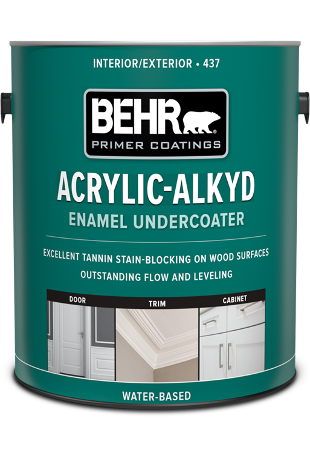Green Chemistry: Steps towards a Healthier Planet

What is Green Chemistry?
Green chemistry can be thought of as an idea or a philosophy to design chemicals in a way that reduces the production of hazardous substances. Quite simply you can think of it as 'sustainable' chemistry.
However, it is interesting to note that it is not a principle that applies specifically to chemistry; rather it is inclusive of all areas of science such as environmental science, biology and physics. It aims to find creative solutions to real—world environmental problems.
Early Origins; The Historical Background
The idea of Green chemistry was initially developed in response to the Pollution Prevention act of 1990.
- The Pollution Prevention Act of 1990 essentially declared that pollution should be prevented and reduced at the source, be it manufacturing or using raw materials.
- The aim was that it should be both cost effective and be environmentally friendly when producing substances.
It declared that the US national policy should reduce pollution by enhancing designs of products rather than relying on treatment and disposal.
During the mid to late 1990s, there was an increase in the number of international meetings regarding green chemistry. Notable examples are the Gordon Research Conferences and other green chemistry networks developed in the US, UK, Spain and Italy.
The 12 Principles of Green Chemistry
published by Paul Anastas and John Warner in 1998
Below are the 12 principles of chemistry. It was a short description to aid better understanding!
1) Prevention - Simply, it requires that we prevent waste rather than focusing on waste treatment or cleaning up the unwanted or by-products.
2) Atom Economy - This requires that the atom economy should be maximized. To explain, the atom economy is the measure of how efficiently desired products are produced from a reaction. For example, if all reactants used in a reaction produce the desired products with no waste or by-products, we can say that there is 100% atom economy.
3) Less Hazardous Chemical Syntheses - This deals with designing chemical products in a safer manner, so that it is eco-friendly and sustainable. This requires the reduction of toxic solvents or surfactants (discussed below in the 5th principle)
4) Designing Safer Chemicals - As you can likely tell, it is self-explanatory! The aim would be to design chemicals that function desirably but also have a minimized toxicity.
5) Safer Solvents and Auxiliaries - First auxiliaries are chemical substances like solvents, washing agents and surfactants. It is important to consider using safer alternatives since some solvents like benzene are carcinogenic to an extent.
6) Design for Energy Efficiency - Also self-explanatory, it says that we design experiments in a more energetically efficient way, for example, performing experiments in room temperature or low pressure so that we don't need to provide extra unnecessary energy. It is important to consider saving resources and reducing energy inefficiency.
7) Use of Renewable Feed-stocks - Raw materials or reactants to make products are referred to as Feed-stocks. It is important that they are renewable as this helps us reduce the carbon footprint.
8) Reduce Derivatives - Simply put, it requires the number of steps in a reaction to be as low as possible—don't do extra steps unless it is absolutely needed. The reason for this is since extra steps may waste time, be energetically inefficient or create waste.
9) Catalysis - This essentially requires the designing of catalysts to increase efficiency and make reactions more environmentally friendly. This is important as the usage of catalysts reduces unwanted by-products.
10) Design for Degradation - This requires that the desired products degrade once their designated function is fulfilled. This means that they are no longer harmful to the environment and safer to humans and animals!
11) Real-time Analysis for Pollution Prevention - This pretty much requires that we monitor the reaction as it happens in order to prevent any unwanted events. This is extremely important as devastating disasters can occur. A notable example is the Texas City Disaster in 1947. A ship S.S. Grandcamp was loaded with more than 2300 tons of ammonium nitrate fertilizer and a lot of fuel oil. A small fire started and in an attempt to contain it or put out the fire, they pumped steam. This turned the ammonium nitrate into liquified nitrous oxide. All of this increased the temperature until 850 degrees Fahrenheit; the temperature at which the ammonium nitrate exploded. This took the lives of more than 400 individuals.

12) Inherently Safer Chemistry for Accident Prevention - Essentially, this long principle just states that we use safer substances. For example, avoiding the usage of substances that may cause explosions, fires or releases toxic substances. This is important as we must prioritize our and others' safety. Additionally, more accidents corresponds to more costs in cleaning up the mess and purchasing more chemicals.
Global Significance
Green chemistry in general reduces pollution at the very early steps of designing products or manipulating raw materials in the lab. It minimizes hazards and accidents and aids in making experiments more energy efficient, cost efficient and eco-friendly for the better of our planet! It also helps address issues such as climate change and pollution.
How can we apply this in our daily lives?
We can also implement green chemistry in our simple, everyday-lives to impact the environment as an individual. Small changes create great impacts in the long run.
- Green dry cleaning of clothes - Try using eco-friendly agents such as CO2 with an appropriate surfactant instead of Perchloroethylene or perc; a commonly used solvent in dry cleaning.
- Eco-friendly paint - Use water-based acrylic alkyd paints (made from recycled plastic soda bottles and soya bean oil)

- Biodegradable Plastic - This aids in reducing pollution as well as encouraging steps towards a sustainable and healthier world for the future!




